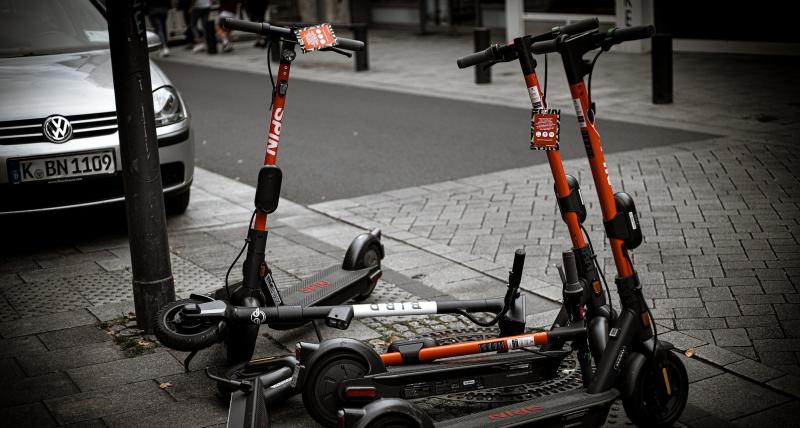Electric scooters have rapidly become a popular mode of transportation, offering an eco-friendly, cost-effective, and fun way to navigate busy streets or suburban neighborhoods. But how exactly do electric scooters work? In this beginner’s guide, we’ll break down the components, mechanics, and technology that power electric scooters, making it easier for you to understand their functionality and how to maintain them.
The Basic Components of an Electric Scooter
An electric scooter is composed of several key parts that work together to provide you with a smooth and effortless ride. Let’s take a closer look at the essential components:
1. Electric Motor
The heart of every electric scooter is its motor, which powers the wheels and propels the scooter forward. Electric scooter motors are typically located either in the front or rear wheel (hub motors), or in some cases, both wheels. Most scooters have either a single motor or dual motors, depending on the power output and performance required.
- Hub Motors: These are integrated into the wheel itself and are known for their efficiency and low maintenance. Hub motors are quiet, powerful, and help the scooter accelerate smoothly.
- Power Ratings: Motors are rated in watts (W), with most commuter scooters ranging between 250W and 750W. A higher wattage generally means more power, which is useful for tackling hills or achieving higher speeds.
2. Battery
The battery is the lifeblood of an electric scooter, storing the energy needed to power the motor. Electric scooters are typically powered by lithium-ion batteries, which are both lightweight and energy-dense.
- Battery Capacity: The battery’s capacity is measured in watt-hours (Wh), and this determines how far you can travel on a single charge. A typical electric scooter may have a battery ranging from 200Wh to 500Wh, providing a range of 10 to 30 miles depending on factors like rider weight and terrain.
- Charging Time: Charging times vary, but most electric scooter batteries take 3 to 6 hours to fully recharge. Some models come with fast-charging options to reduce this time.
3. Throttle
The throttle controls the speed of the scooter by regulating how much power the motor receives from the battery. On most electric scooters, the throttle is located on the handlebars and can be either a twist grip or a thumb lever. By pressing the throttle, you engage the motor and control how fast you go.
4. Brakes
Brakes are critical for safety, allowing you to slow down or stop your electric scooter as needed. Electric scooters often come with multiple types of braking systems, including:
- Mechanical Brakes: These include disc brakes or drum brakes, which provide strong, reliable stopping power.
- Electric Brakes: Many scooters also feature regenerative braking, which uses the motor to slow the scooter down while converting kinetic energy into electrical energy that charges the battery.
5. Controller
The controller is the scooter’s brain. It manages the flow of power between the battery and motor, interpreting signals from the throttle and brakes. The controller ensures smooth acceleration and deceleration and helps regulate the scooter’s overall performance.
6. Wheels and Tires
The type of wheels and tires on an electric scooter can affect its performance and comfort. Scooters typically come with either solid tires (which are puncture-proof but offer a bumpier ride) or pneumatic (air-filled) tires, which provide better shock absorption for a smoother ride.
How Electric Scooters Work: The Process Explained
Now that we’ve explored the main components of an electric scooter, let’s dive into how they all work together to power your ride. Here’s a step-by-step breakdown of the process:
Step 1: Powering On the Scooter
Once the battery is charged, you can turn on the scooter using a power button. Some models also feature key ignition or an app-controlled system. Once the scooter is on, the controller activates, allowing you to control the motor via the throttle.
Step 2: Using the Throttle
When you press or twist the throttle, the controller sends a signal to the battery, which then supplies power to the motor. The more you engage the throttle, the faster the motor spins, which propels the scooter forward.
Step 3: Maintaining Speed and Stability
As you ride, the controller continuously adjusts the amount of power going to the motor to maintain a steady speed. The scooter’s weight distribution, tire size, and motor placement all work together to keep the ride stable.
Step 4: Braking and Slowing Down
When it’s time to slow down or stop, you’ll use the brakes. With mechanical brakes, pulling the brake lever engages the disc or drum brakes, slowing the wheels. If your scooter has regenerative braking, the motor will also assist in reducing speed by converting energy back to the battery.
Step 5: Charging the Battery
Once your ride is complete, you can recharge the battery by plugging it into a standard wall outlet. Most scooters have a charging port near the deck, making it easy to plug in and power up for your next ride.
Choosing the Right Electric Scooter for You
Understanding how electric scooters work is the first step to choosing the right model for your needs. Here are a few key considerations when selecting an electric scooter:
1. Range and Battery Life
Consider your daily travel distance. If you commute long distances or plan on using the scooter for extended periods, choose a model with a larger battery and a longer range.
2. Motor Power
If your commute involves hills or rough terrain, opt for a scooter with a more powerful motor (500W or higher) to ensure smooth and efficient riding.
3. Weight and Portability
If you need to carry your scooter on public transport or up stairs, look for a lightweight, foldable model that’s easy to store and transport.
4. Safety Features
Make sure your scooter is equipped with reliable brakes, lights, and reflectors for safe riding, especially if you’ll be riding in traffic or low-light conditions.
Real-Life Example: Mike’s Commute with an Electric Scooter
Mike, a software developer in San Francisco, switched to an electric scooter to beat the traffic and save on parking costs. He chose a model with a 350W motor and a 400Wh battery, giving him a range of 18 miles on a single charge—perfect for his daily commute. With its lightweight design, Mike easily folds and carries his scooter into the office, cutting his overall commute time by 20 minutes each day. By understanding how his scooter works, Mike can maintain it effectively and enjoy a smooth, hassle-free ride every morning.
Conclusion: Understanding How Electric Scooters Work
Electric scooters are a practical and enjoyable way to navigate your city or neighborhood, but understanding how they work is crucial to making the most out of your investment. By learning about the key components—motor, battery, throttle, brakes, and controller—you can choose the right scooter that fits your lifestyle and commuting needs.
Whether you’re commuting to work, running errands, or simply enjoying a leisurely ride, electric scooters offer an efficient and eco-friendly transportation option. The better you understand how they function, the more you can maximize their performance and keep your scooter running smoothly for years to come.



